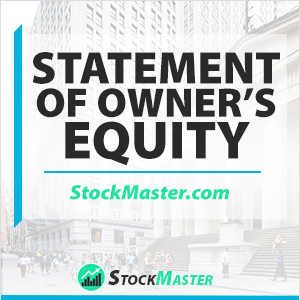 What is the Statement Of Owner’s Equity?
What is the Statement Of Owner’s Equity?
Definition: The statement of owner’s equity is a concept in economics that is all about demonstrating the changes that business experiences in its capital balance during a specific financial reporting duration. The capital balance changes are usually caused by net income, net loss, withdrawals, and contributions.
The statement of owner’s equity mostly applies to individually owned businesses, otherwise known as sole proprietorships. This is why the aspect of the owner’s equity comes in because the business is owned by one person, and so they are the ones that fund the activities of the business.
The owner’s equity amount usually increases based on the owner’s contribution or a rise in business profits. Similarly, the owner’s equity goes down when the business experiences losses or when the owner withdraws some of the equity.
Owner’s Equity Formula Calculated
How is the owner’s equity calculated?
The owner’s equity calculations usually aim to establish the ending equity balance. This is because the owner usually invests a specific amount as the starting equity balance. Calculating the ending equity balance is quite easy, as shown below.
Ending equity balance = Beginning equity balance + (net income + owner’s contribution) – (net loss owner’s withdrawals).
Note that the ending equity balance every year carries forward to the following year, where it is treated as the starting balance for a new year. The above equation is used in the Statement of Owner’s Equity to highlight the business owner’s beginning capital at the beginning of the accounting period, usually at the start of the year. It also highlights the changes that influence capital.
The Statement Of Owner’s Equity is also called the Statement of Changes In Owner’s Equity. Both names make sense since they highlight the level of owner’s equity and also the changes that affect the level of owner’s equity, whether positive changes or negative changes.
Types of Statement Of Owner’s Equity Examples
Statement Of Owner’s Equity Format
Sole proprietorships or small businesses tend to use the Statement of Owner’s Equity to account for the equity usage and also to ensure that the business maintains a healthy level of capital. Below is an example of a Statement of Owner’s Equity.
Note that the capital amount that is used varies from one business to another. Since the Statement of Owner’s Equity is mainly suited or sole proprietorships, businesses that operate on a partnership basis usually account for equity in an accounting statement called the Statement of Stockholders’ Equity. This is usually the case because partners in business contribute a specific amount of capital, and this capital contribution is also considered when sharing profits, thus the use of the term “stockholders.”
Note that at the beginning, we noted that the Statement of Owner’s Equity highlights equity changes in business over a specific duration of time. That is why every statement of owner’s Equity document usually has the line “For the Year Ended…” to indicate the specific duration that the equity levels in business were monitored. It is common for most businesses to use “For The Year Ended December 31,” followed by the year. This approach means that the business accounts for the equity changes from January 1 to December 31.
Note that incomes and expenses are a part of the Statement Of Owner’s Equity because of their impact on the equity levels in a business. For example, incomes tend to increase the owner’s equity, while expenses tend to decrease the owner’s equity. The net income in a business is always calculated by subtracting the net expenses from the reported incomes.
Statement Of Owner’s Equity Purpose
Going by the above school of thought, then every business aims to maximize their incomes while keeping their expenses below the income levels so that they can make profits. Otherwise, a situation where a business has higher expenses than incomes defeats the purpose of being in business.
Thus the goal is to maximize profits through business activities while making sure that expenses are minimal. The Statement of Owner’s Equity thus helps business owners to determine whether their business is doing good or whether they are losing money.
